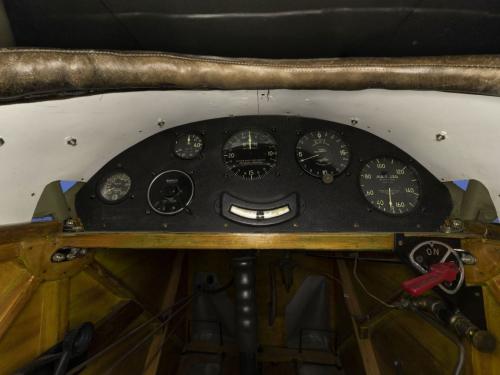After the Great War, Air Service Brig. Gen. William "Billy" Mitchell requested the Engineering Division at McCook Field design an aerial dispatch vehicle able to serve as a liaison between battlefield units. Civilian Alfred V. Verville completed the design in early 1920 and the Lawrence Sperry Aircraft Company received the manufacturing contract. Sperry produced approximately 50 Messengers and the civilian two-seat version, the Sport Plane, between 1920 and 1926.
The Messenger's small size, simple construction, and inexpensive cost made it ideal for testing and experimentation. The National Advisory Committee for Aeronautics used one in its pioneering aerodynamic research programs from 1923 to 1929. Sperry modified twelve into the radio-controlled Messenger Aerial Torpedo and developed the apparatus for a Messenger to make the first successful airship hook on and release in December 1924. This is the last remaining Messenger. It was originally a Sport Plane and was converted to represent the Messenger used in the army's 1924 airship tests.
Display Status
This object is on display in Interwar Military Aviation at the Steven F. Udvar-Hazy Center in Chantilly, VA.
Panoramas
Object Details
Date
1920
Country of Origin
United States of America
Type
CRAFT-Aircraft
Designer
Alfred V. Verville
Manufacturer
Lawrence B. Sperry
Physical Description
Top Speed: 155.6 km/h (96.7 mph)
Engine: Lawrance L-3, 60 horsepower
Armament: None
Manufacturer: Lawrence Sperry Aircraft Company, Farmingdale, Long Island, New York, 1920
Dimensions
Wing span: 6.096 m (20 ft)
Length: 5.41 m (17 ft 9 in)
Height: 2.06 m (6 ft 9 in)
Weight, empty: 283 kg (623 lb)
Weight, gross: 391 kg (862 lb)
Inventory Number
A19580040000
Credit Line
Gift of Edward V. Rickenbacker
Data Source
National Air and Space Museum
Restrictions & Rights
Usage conditions apply
For more information, visit the Smithsonians Terms of Use.



